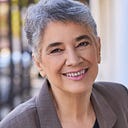Member-only story
Where Is the Help for Single People Who Are Going Hungry During COVID?
Food insecurity is a bigger problem for singles, but they are less likely to get help

Even before the nationwide lockdowns, there were far too many people in the U.S. with not enough to eat. The pandemic has exacerbated that disturbing reality. More single than married people are suffering. Single people typically have far less money than married people, for a variety of reasons including discriminatory practices written into the laws of the land. But the big financial disadvantage of unmarried Americans is not the only reason they are more likely to go hungry.
Single People Are Less Likely to Have Enough to Eat than Married People
Since April, the Census Bureau has been conducting a weekly Household Pulse Survey to learn how people are faring during the pandemic. The number of participants varies each week, but as an example, for the week of June 11–16, more than 1.2 million households were sent invitations to participate by email or text message, and more than 73,000 responded.
During the week of May 14–19, participants were asked, “In the last 7 days, which of these statements best describes the food eaten in your household?” They were classified as not having enough food if they selected “sometimes not enough to eat” or “often not enough to eat.”
For adults with no children, there was a striking difference between those who were and were not married. Four percent of the married people said they did not have enough food. More than three times as many single people, 13%, said the same thing.
Not Enough to Eat: Households with No Children
4% married, no children
13% not married, no children
For those who did have children, the married-people households were again more likely to be spared from hunger. Ten percent of those households did not have enough to eat. More than twice as many single-person households, 22%, did not have enough to eat.
Not Enough to Eat: Households with Children
